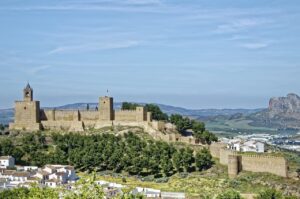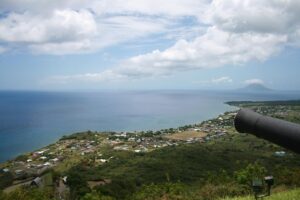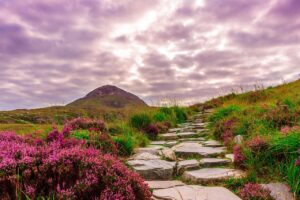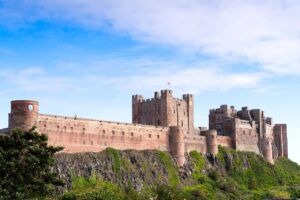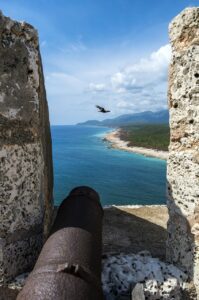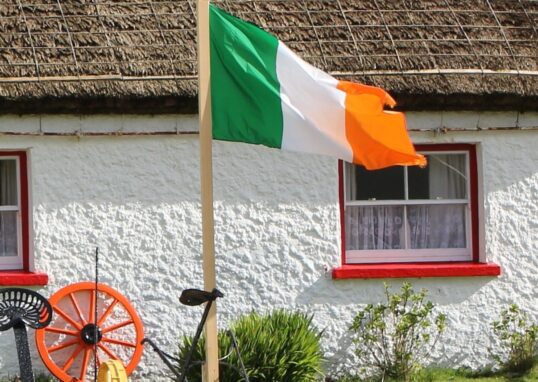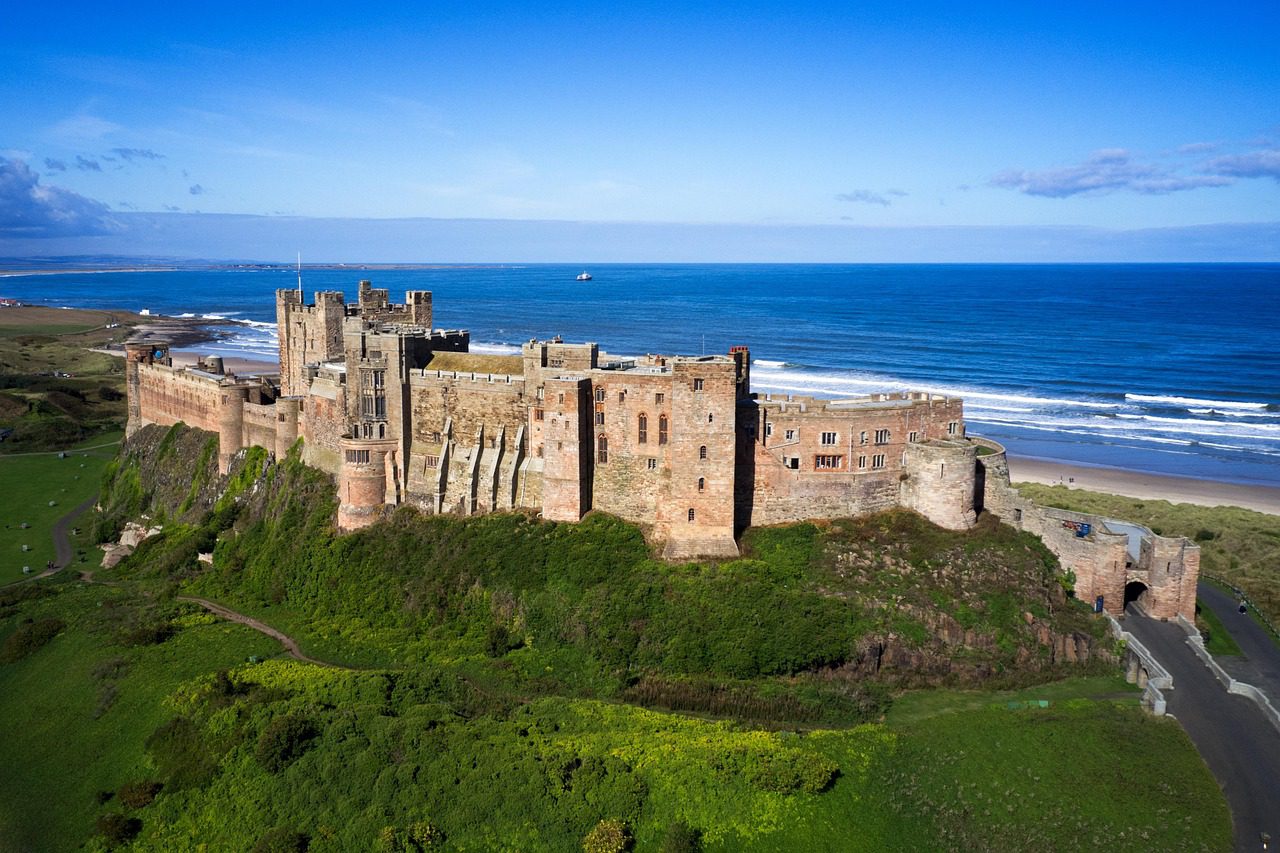
Brimstone Hill Fortress National Park
Brimstone Hill Fortress National Park is the most important and captivating historical monument of the Caribbean. Located on the beautiful island of Saint Kitts in the West Indies, this site boasts natural splendor alongside its history of colonial rule. It is proudly proclaimed as a UNESCO World Heritage Site, cherished for its outstanding universal value as well as being one of the best preserved historic fortifications of the Americas. This article gives an in-depth description of Brimstone Hill Fortress National Park, such as history, architecture, visitors’ experience, and surrounding attractions. The article is composed in plain, straightforward, and understandable language.
Brimstone Hill Fortress
Brimstone Hill Fortress National Park has been called the “Gibraltar of the West Indies.” This is in acknowledgment of its strong defensive design and its commanding position overlooking the Caribbean Sea. The fortress sits on top of a volcanic sloping hill, 240 meters (800 feet) above sea level. From here, visitors enjoy the breathtaking panoramic view of the island, sea, and even far-out islands like Sint Eustatius and Saba. The fortress was constructed by British supervision using African slave labor between the 1690s and towards the late 18th century. The British military engineers constructed it to secure the island from foreign invasion, particularly from the French and Spanish empires which also sought to conquer the Caribbean. Brimstone Hill Fortress today is not only a historic site but also a symbol of strength, heritage, and cultural identity for the people of Saint Kitts and Nevis.
Historical Background
The Brimstone Hill Fortress’s history is associated with the Caribbean colonial wars. The island of Saint Kitts was one of the first English colonies in the Caribbean, established in 1623. However, the French also settled nearby and this led to recurring clashes between these two European powers. It was begun in 1690 after the British capture of the French fortress on the island of Saint Eustatius. The British deemed it necessary to build a strong defense on Brimstone Hill due to its commanding position above the coast and surroundings. Throughout the next century, the fortress expanded incrementally. By 1790, it stood as one of the Caribbean’s most impressive military structures. It was built of a combination of local volcanic rock and earth, giving it fortitude and natural cover. In 1782, during the American Revolutionary War, the fortress was captured by French troops following a bloody battle. It was restored to British control a year later through the Treaty of Paris. Then, Brimstone Hill continued to be used until the mid-19th century. In 1852, it was abandoned and in disrepair. It was restored in the 20th century, and in 1985, it was declared the first national park of Saint Kitts and Nevis. In 1999, it was a World Heritage Site, as declared by UNESCO.
Architecture and Design
Brimstone Hill Fortress is a gem of British military architecture. Its design adheres to 17th and 18th-century fortification planning principles, especially those of French military engineer Sébastien Le Prestre de Vauban. The fortress boasts bastions, ramparts, barracks, magazines, and gun platforms. Its hard stone walls were built using volcanic rock, with limestone used on decorative and structural elements. Among the notable architectural details is the Citadel, or Fort George. This main building was the primary defensive and administrative zone. It features officers’ accommodation, a parade square, and numerous storage facilities. Surrounding the Citadel are other fortifications such as:
- The Prince of Wales Bastion – providing a panoramic view of the Caribbean Sea.
- The Magazine Bastion – which previously contained gunpowder and ammunition.
- The Orillon Bastion – protecting the western flank of the fortress. The incline of the fortress made it nearly impossible for their adversaries to mount a successful attack. The heavy cannons were dragged laboriously up the hill by manpower and basic machinery.
Cultural and Symbolic Importance
Brimstone Hill Fortress stands as evidence of the colonial history of the Caribbean and of the toil of enslaved Africans who built it. The place is a representation both of oppression and of survival. For Saint Kitts and Nevis, it is a representation of resiliency and national pride. The fortress also represents the blending of European engineering with African craftsmanship. This blend constructed a monument that has survived centuries of weather, war, and time. Thousands of tourists, students, and historians visit the site every year to learn about the complex history of the Caribbean and its path to independence.
Visitor Experience
A visit to Brimstone Hill Fortress National Park is an experience never to be forgotten. The drive starts with a winding ascent up the hill, flanked by green foliage and sea scenery. The winding road leads upwards, giving intermittent glimpses of the fortifications and bastions. Upon entry, there is a museum and a welcome center. The museum contains historical relics, maps, uniforms, and the guns used by the British soldiers. Informative panels describing the history of the fortress and its inhabitants are present. You are allowed to walk along the stone pathways and are given access to the various bastions and barracks. With the restoration process of the Citadel, it is possible to view how the 18th-century officers lived. The most revered view by the majority of tourists is the panoramic view from the top. From the top, you get a chance to see the blue Caribbean Sea, Nevis Island, and Saint Kitts vegetated landscape. The experience is tranquil and inspiring. There are guided tours to learn the history in detail. There are picnic areas where tourists can sit and experience nature as well. Brimstone Hill is not just a landmark of history; it is also a natural wonder. Birds, lizards, and tropical plants are rampant in and out of the park, offering a fine complement of nature and culture.
Conservation and UNESCO Recognition
UNESCO declared the Brimstone Hill Fortress National Park as a World Heritage Site in 1999. This was because of its architectural integrity, historical significance, and fine preservation. UNESCO hailed the fortress as an outstanding piece of European military architecture planted in the Caribbean setting. It also noted the collaboration between colonizers and enslaved Africans in erecting this masterpiece. Conservation continues up to the present time. The Brimstone Hill Fortress National Park Society, which is a national body, oversees the site. They collaborate with the government and foreign partners in preserving the structures and promoting sustainable tourism.
Events and Activities
The fortress hosts cultural events throughout the year. There are battle reenactments, Independence Day events, and school educational programs. Photographers love photographing the dramatic landscape of the fortress and the coastline. Brimstone Hill sunset is especially enchanting with golden light grazing over the stone walls. The site is also utilized as a venue for concerts and outdoor performances. Its courtyards and beautiful scenery provide it with an irrepressible location for cultural activities.
Surrounding Places and Attractions
Brimstone Hill Fortress National Park, located on the beautiful island of Saint Kitts, is caressed by a vibrant mix of history points, cultural landmarks, and nature. The environment of the fortress offers a perfect mix of heritage, adventure, and relaxation. If you are a history enthusiast, lover of nature, or simply someone who wants to enjoy the Caribbean essence, the surroundings of Brimstone Hill promise unforgettable experiences.
Sandy Point Town
Beneath the foot of Brimstone Hill Fortress is Sandy Point Town, an old and significant town in Saint Kitts. In colonial days, it was the principal port of the island for exporting sugar, which was the economy’s mainstay. Today, Sandy Point is a peaceful seaside town filled with friendly locals. Visitors are able to promenade through the narrow streets lined with colorful Caribbean-style buildings and small businesses. The waterfront here is idyllic, with calm waters ideal for a swim and small fishing boats on the water’s surface. The Sandy Point Beach is a lovely place to relax after a visit to the fortress. You can enjoy the sea breeze, watch local fishermen bringing in their day’s catch, or just click photos of the distant landscape of the Caribbean Sea and surrounding islands.
Dieppe Bay Town
A brief drive north of Sandy Point lies Dieppe Bay Town, another historic French-founded settlement. It too was one of the first areas on Saint Kitts to be colonized, in the early 17th century. The town still has a small-village feel with the French and English influences evident in the architecture and culture. Dieppe Bay also features a black sand beach produced by volcanic eruptions. The beach is unique in being surrounded by a natural reef so that the waters are calm and safe to swim in. You can most likely find the weekend picnics of the local families there. You can also view the island of Sint Eustatius (Statia) on the horizon from the beach. On a good day, the view is breathtaking. There are also small restaurants close to the beach where you can dine on freshly grilled fish and local Caribbean cuisine.
Romney Manor and Caribelle Batik
About 15 minutes’ drive from the Brimstone Hill Fortress is the very famous Romney Manor, the most sought-after attraction in Saint Kitts. The estate has a rich history behind it — it was once owned by Thomas Jefferson’s great-great-great-grandfather, the third President of the United States. Romney Manor is best known today as the home of Caribelle Batik, a workshop and shop where visitors can watch skilled artisans creating colorful batik cloth using ancient wax-resist dyeing techniques. The procedure is intriguing to witness, and the finished products, from clothing to scarves and wall hangings, make ideal souvenirs. The estate itself is stunning. It is situated within opulent tropical gardens with exotic plants, flowers, and ancient trees. There is a dramatic highlight in an enormous 400-year-old Saman tree providing a cool shaded space for the visitors. The peaceful ambiance makes it a perfect destination where one can unwind and enjoy nature following a tour of the fortress.
Wingfield Estate
Immediately adjacent to Romney Manor is the Wingfield Estate, a 200-year-old sugar plantation considered to be one of the oldest on the Caribbean. It was founded in the early 1600s and was a prominent part of the island’s sugar industry for over 200 years. Visitors get to walk through the ruins of colonial-era buildings, aqueducts, and machinery that tell the story of colonial sugar production. There is also a miniature rum distillery where you can sample Old Road Rum, a local brew produced through traditional methods. Wingfield Estate provides a first-hand link to the history of the island, wealth and hardship of plantation times. Interpretive signs relate the story, an educational and scenic sight.
Mount Liamuiga
Thrill-seekers consider Mount Liamuiga a must-visit just off Brimstone Hill. It is the highest point on the island at about 1,156 meters (3,792 feet) above sea level. The mountain is actually a dormant volcano, which is cloaked in dense tropical rainforest. Summit trekking is a popular activity. The trek begins near St. Paul’s village and takes about three or four hours to complete. Along the way, one sees exotic blooms, gigantic ferns, and monkeys playing in the trees. At the summit, you can look into the crater of the volcano, blanketed in thick foliage. On a clear day, the view from the summit is wonderful to nearby islands such as Nevis, Sint Eustatius, and Saba. The hike is difficult but highly gratifying.
Black Rocks
Located on the northeast coast of Saint Kitts, Black Rocks is one of the island’s most dramatic natural sights. The formations were created several centuries ago when lava flows from Mount Liamuiga created them. The dark volcanic rocks create a beautiful contrast to the turquoise water, and photography is in its pure element here. The spot is a favorite rest stop where visitors stop to take in the view, take a photo, or browse the small roadside stalls selling souvenirs, handmade crafts, and island delicacies of coconut water and toasted peanuts. It’s the perfect spot to see the island’s uncontained nature.
Frigate Bay
South of Basseterre is the island’s resort center, Frigate Bay. It is divided into two sections: South Frigate Bay, which fronts the Caribbean Sea and has calm waters, and North Frigate Bay, which faces the Atlantic Ocean and is ideal for surfing. Frigate Bay boasts a variety of hotels, restaurants, and beach bars. The nightlife is lively, especially at dusk, when locals and foreigners show up to party, eat, and drink. Water activities including jet skiing, kayaking, and snorkeling are also active. For a great night out, visitors can enjoy a sunset cocktail at The Strip, a chain of beach bars with live music and seafood.
Nevis Island
From the port of Basseterre, visitors have a 45-minute ferry to Nevis, the smaller island sister to Saint Kitts. Nevis is tranquil, charming, and full of natural beauty. The sights include Pinney’s Beach, the Caribbean’s most beautiful beach, and the Nevis Peak, an inactive volcano capped by rainforest. History enthusiasts can visit the Museum of Nevis History, situated in the very building where Alexander Hamilton, one of America’s Founding Fathers, was born. Nevis is also famous for high-end resorts, gardens, and historic sugar mills converted into romantic inns.
St. Kitts Scenic Railway
For a change of pace, visitors may ride the St. Kitts Scenic Railway, known as the “Last Railway of the West Indies.” Originally built in the early 1900s to transport sugar cane from the farms to the factory, it is now a tourist train. The train tours around two-thirds of the island, providing breathtaking vistas of the coast, hills, villages, and former sugar plantations. The tour features narration on the island’s history and culture, and there are refreshments available during the journey.
Conclusion
The Brimstone Hill Fortress National Park is not only a fort but also a living museum of Caribbean history. It is a testament to the narrative of colonial rule, human resilience, and cultural blending. Its restored walls and spectacular views make it one of the most memorable destinations in the Caribbean. Surrounded by lush settings, picturesque villages, and welcoming people, Brimstone Hill offers learning and inspiration. It is a place where nature and history meet — a true gem of Saint Kitts and Nevis. For history lovers, architecture students, and nature enthusiasts, Brimstone Hill Fortress National Park is a place that leaves an indelible mark.

